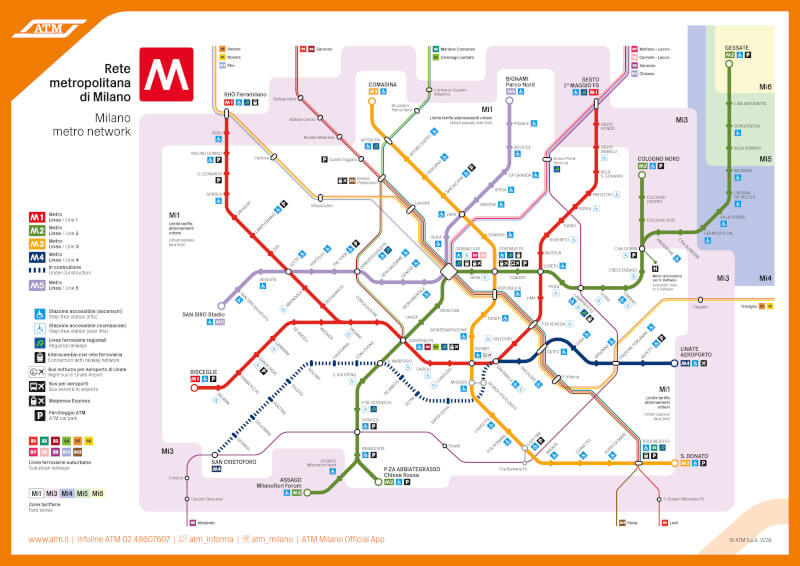Milan Metro is an underground train system owned by ATM in Milan, Italy. It was inaugurated on November 1st, 1964. Milan Metro has 4 lines and 113 stations. The metro makes connections to other means of transportation of the ATM network, such as Line S (suburban railway), buses, and the National Railway Network. The metro is open every day of the year, from 7:00 am until midnight. The metro can be paid with tickets or cards, with prices starting from €1.50. The metro uses electric rails. Therefore, do not litter on the tracks to avoid fires. In the future, the metro will have the M4 line. Make sure to have a map of the stations, since most stations are not marked with their names. As a fun fact, the M5 line is fully driverless. The Cadorna station of the metro is close to many touristic attractions.
Metros in Italy: Milan Metro
Milan is the second most populated city in Italy, with a population of around 1,300,000 habitants. It is the capital of the Lombardy region. Milan was founded on 600 B.C.E by the Celtics. Between the years 300 and 400 A.D, Milan was the capital of the western part of the Roman Empire. Milan is a world famous place for fashion, hosting brands such as Dolce & Gabana, and Armani. This is one of the most industrialized cities in Italy, and a leading economy in the world. The city has a surface area of around 2000 kilometers squared, and it is divided into 9 regions called Zones. The city has three international airports: Linate Airport, Orio al Serio Airport, and Malpensa International Airport. This last airport is the biggest one in Milan.
Besides the metro, the city has buses and taxis, which travel in a network of over 1000 kilometers of streets. There are also tramways that connect Milan to the rest of Italy. There are high speed trains that go to Naples and Rome.
Milan Metro is a system of underground trains operated by ATM (Azienda Trasporti Milanesi). The metro covers a network of around 1350 kilometers of rails. ATM also manages buses, parking, and bikes. Another means of transportation managed by ATM is the tramway service called the Suburban Line, also called Line S.
History of Milan Metro
The first drafts of the metro were made in 1914. Milan Metro's construction began in 1938 but it was interrupted because World War 2 began. The construction finally resumed in May 4th, 1957. The metro's architect was Franco Albini. The metro inaugurated on November 1st, 1964, with the opening of M1 line’s 21 stations, covering the regions from Lotto to Sesto Marelli. M2 line opened on September 27th, 1969, with the opening of stations from Caiazzo to Cascina Gobba. M3 line was opened on May 3rd, 1990, with the opening of stations from Centrale to Duomo. The M5 line opened on February 10th, 2013, with the opening of stations from Zara to Bignami. M5 line was fully finished on November 2015.
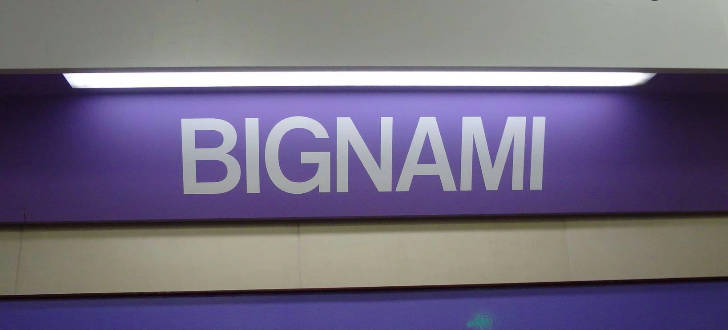
Milan Metro substituted many of the tramways going from Societá Trazione Elettrica Lombarda (STEL). The last stations to be made for the M1 line were the stations from Molino Dorino to Rho Fiera, which were made on December 19th, 2005. M2 line's last stations were the stations from Famagosta to Milanofiori Forum, which were made on February 20th, 2011. M3 line's last stations were the stations from Maciachini to Comasina, which were made on March 26th, 2011.
Lines and stations
The metro has four lines: M1, M2, M3, and M5. This lines combined have a total of 113 stations. The stations for each line are the following:
M1 Line: This line has stations from the region of Rho Fiera to the region of Sesto 1º Maggio. It has the following 38 stations: Rho Fiera, Villa San Giovanni, Sesto Rondó, Sesto Marelli, Turro, Precotto, Gorla, Rovereto, Lima, Pasteur, Loreto, Palestro, Porta Venezia, Duomo, San Babila, Cadorna, Cairoli, Cordusio, Pagano, Conciliazione, Gambara, Wagner, De Angeli, Inganni, Bande Nere, Bisceglie, Primaticcio, Lotto, Buonarroti, QT8, Amendola, Uruguay, Lampugnano, Bonola, Molino Dorino, Pero, San Leonardo, Sesto 1º Maggio
M2 Line: This lines covers the regions from Assago Milanofiori Forum to Gessate. It has the following 35 stations: Assago Milanofiori Forum, Cologno Nord, Cologno Sud, Cologno Centro, Villa Pompea, Cascina Antonietta, Gorgonzola, Villa Fiorita, Bussero, Cassina de' Pecchi, Vimodrone, Cernusco sul Naviglio, Cascina Burrona, Udine, Cascina Gobba, Cimiano, Crescenzago, Caiazzo, Piola, Lambrate FS, Loreto, Gioia, Centrale FS, Lanza, Garibaldi FS, Moscova, Sant'Ambrogio, Cadorna FNM, Romola, Sant'Agostino, Famagosta, Porta Genova FS, Assago Milanofiori Nord, Abbiategrasso, Gessiate
M3 Line: This line covers the regions from Comasina to San Donato. It has the following 21 stations: Comasina, Dergano, Affori FN, Affori Centro, Zara, Maciachini, Sondrio, Turati, Centrale FS, Repubblica , Missori, Montenapoleor, Porta Romana, Crocetta, Duomo, Brenta, Lodi T.I.B.B, Corvetto, Regoredo FS, Porto di Mare, San Donato
M5Line: This line covers the regions from San Siro Stadio to Bignami. It has the following 19 stations: San Siro Stadio, Bicocca, Ponale, Cá Granda, Marche, Istria, Isola, Zara, Cenisio, Garibaldi FS, Monumentale, Tre Torri, Gerusalemme, Domodossola, Lotto, Portello, San Siro Ippodromo, Segesta, Bignami
Connections
The metro makes connections to the rest of the means of transportation owned by ATM, such as buses and tramways. One of those means of transportation is the Milan Suburban Railway Service, also called Passante or Line S, which is a train system with 125 stations. The metro also makes connections to the Regional and the National Railway Network, which are train services that give rides to cities like Rome.

Connection to the airport
The main international airport in Milan is Malpensa International Airport. To arrive to a metro station from Malpensa Airport, use the Malpensa Express train. From the airport’s Terminal 1, take the Malpensa Express train towards Cadorna station. This station is located on the center of Milan, and will let you can take trains from either M1 line or M2 line. There are Malpensa Express trains available every half an hour. The trip from the airport to Malpensa lasts 30 minutes if you take the non-stop trains, or 36 minutes if you take trains that stop at stations. The Malpensa Express trains make trips until 11:25 pm. If you arrive later than that, use the taxi or a bus. A one-way ticket to Cadorna using the Malpensa Express costs around €13. Taxis can costs over €80 towards Cadorna. Buses can cost around €12 towards Cadorna.
Schedule, timetables, and calendar
Milan Metro runs every day of the year, except during emergencies or during train maintenance. In case of strikes, trains will run from the stations' opening time until 8:45 am, and then from 3:00 pm to 6:00 pm. During Christmas and during May 1st, the metro will open from 7:00 am until 7:30 pm. For updates on the trains' schedule, go on Twitter and follow @ATM_informa.
Timetables for weekdays:
> The peak hours are from 7:00 am to 9:00 am, and from 5:00 pm to 8:00 pm for lines M1, M2, and M3. For M5, the peak hours are from 7:00 am to 9:00 am, and from 4:30 am to 8:00 pm.
Lines M1, M2, and M3 open from 6:00 am until 12:30 am. Line M5 opens from 6:00 am until midnight. Trains are available at the following times (summer starts in July 4th, and ends in September 6th):
1) M1: Sesto 1º Maggio FS to Pagano:
1.1) Winter: Trains are available every two minutes during peak hours, and every two minutes and 45 seconds during the rest of the day.
1.2) Summer: Trains are available every two minutes and 20 seconds during peak hours in the morning, every four minutes during peak hours in the afternoon, and three minutes and 40 seconds during the rest of the day.
2) M1, Rho Fiera Milano station: Trains are available at the following intervals:
2.1) Winter: Every four minutes in peak hours in the morning, every three minutes in peak hours in the afternoon, and five minutes during the rest of the day.
2.2) Summer: Every five minutes in peak morning hours, every four minutes during peak afternoon hours, and every six minutes during the rest of the day.
3) M1, Bisceglie station: Trains are available in the following intervals:
3.1) Winter: Every four minutes during peak hours in the morning, every five minutes during peak hours in the afternoon, and every seven minutes during the rest of the day.
3.2) Summer: Every five minutes during peak hours in the morning, every six minutes during peak hours in the afternoon, and every 9 minutes during the rest of the day.
Prices, cards, and tickets
Tickets and cards are offered. Prices will be shown in euros.
Tickets:
They are available in the following categories: Urban Tickets, Extra-Urban Tickets, Cumulative Tickets, and Rho Fiera Milano Tickets.
1) Urban Tickets: These tickets allow you to travel in the metro, as well as all of ATM’s other means of transportation. It allows rides both in Milan and outside of Milan. The tickets are available in the following categories: Urban Tickets, Carnet of 10 Standard Tickets, BI 4 4-Journey Integrated Ticket, One Day Ticket, Two Day Ticket, Weekly 2x6 Pass, and Luggage Ticket.
- 1.1) Urban Ticket (€1.50): Gives rides for up to 90 minutes.
- 1.2) BI4 4-Journey Integrated Ticket (€6): Gives four rides for up to 90 minutes.
- 1.3) Carnet of 10 Standard Tickets (€13.80): It gives 10 rides, for up to 90 minutes.
- 1.4) One Day Ticket (€4.50): Gives unlimited rides for 24 hours.
- 1.5) Two Day Ticket (€8.25): Gives unlimited rides for 48 hours.
- 1.6) Weekly 2x6 Pass (€10): Gives rides for six days within a week, for up to two rides per day.
- 1.7) Luggage Ticket (€1.50): Ticket required to bring large luggage.
- 1.8) Evening Ticket (€3): Gives rides from 8:00 pm until stations close.
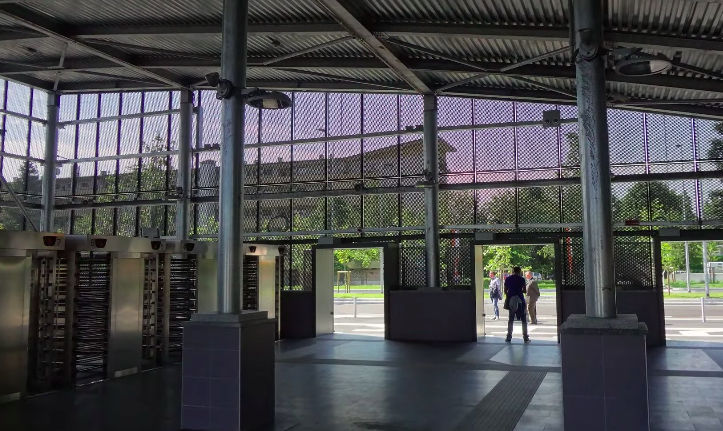
2) Extra-Urban Tickets: These tickets give you rides to Greater Milan and the external ring of Milan's train network. Price varies by zone. The tickets available are: Standard Ticket, and Weekly 2x6 Pass.
- 2.1) Standard Ticket: This ticket is divided into two: type A and type B.
- 2.1.1) Type A (€1.30): This ticket is available for all of ATM’s other means of transportation except the metro.
- 2.1.2) Type B: It can be used only once in the metro. The price varies by the number of zones travelled. The cheapest ticket allows you to travel to one zone, which costs €1.60. The most expensive ticket allows you to travel to four and a half zones, which costs €4.20.
- 2.2) Weekly 2x6 Pass: Gives you rides for six days a week, up to two rides a day. The cheapest ride available is €8.20 to one zone, and the most expensive ride is €19.50 to three and a half zones.
3) Cumulative Tickets: They allow you rides between Milan and Greater Milan, as well as the internal ring of Milan. These tickets are divided into: Standard Cumulative Ticket, Cumulative One Day Pass, and Weekly 2x6 Cumulative Pass.
- 3.1) Standard Cumulative Ticket: The cheapest option is Urban Ticket plus Half a Zone, which costs €1.90. The most expensive option is Urban Ticket plus Four Zones, which costs €4.70.
- 3.2) Cumulative One Day Pass: Its prices range from €5.80 to €11.
- 3.3) Weekly 2x6 Cumulative Pass: Its prices range from €13.50 to €27.
4) Rho Fiera Milano Tickets: The only way of arriving to this station is by buying these tickets. Its prices range from €2.50 to €7.
Cards
There are three types of cards: Urban Travel Cards, Extra-Urban Travel Cards, and Cumulative Travel Cards.
- 1) Urban Travel Cards: This category of cards is divided into: Weekly Travel Card (€11.30), Monthly Travel Card (€35 monthly), Annual Travel Card (€330 yearly), Travel Card for Students, and Travel Card for Senior Citizens.
- 2) Extra-urban Travel Cards: This category of cards is divided into: Weekly Travel Card (€12.50 to €21.50,) Monthly Travel Card (€37.50 to €92 monthly,) Monthly Travel Card for Students, and Annual Travel Card (€488 per year)
- 3) Cumulative Travel Cards: These cards are divided into: Weekly Travel Card (€16.50 to €27,) Monthly Travel Card (€55 to €93 monthly,) Monthly Travel Card for Students, and Annual Travel Card (€498 to €776 yearly)
Rules
-
- 1) Some stations do not have elevators. Call Infoline 02.48.607.607 to see if the elevators are available at your destination. Use the alarms in the elevators only if you are in an emergency.
- 2) When using the stairs, grab the handrails. If you bring children, make sure that they grab the handrails too.
- 3) If using the escalators, stay on your right.
- 4) Do not lean on the doors nor the windows.
- 5) Give your seat to senior citizens and pregnant women if requested.
- 6) Do not use the seats reserved for people using wheelchairs if you do not require it.
- 7) If you are standing while riding the metro, grab the railings to avoid getting injured. If you bring children, they also need to grab the railings.
- 8) Pay attention to the announcements and the screens in stations, since they show important travel information.
- 9) Do not litter. Throwing paper on the rails is dangerous because it may cause a fire since the tracks have electricity. Make sure to throw your newspapers in the recycling bins.
- 10) Be careful not to trip with the gap between the train and the platform. If you bring children, hold their hands while crossing this gap.
- 11) Let the other passengers get out of the train before boarding to avoid injuries or delaying the train.
- 12) Wait for the train behind the yellow line.
- 13) Remember to validate your ticket or card each time you enter the metro and each time that you transfer to another vehicle. The metro's cards should be swiped on the turnstiles, and tickets should be validated on stamping machines.
Future expansions
The M1 line will be expanded to offer rides to the region of Monza Bettola from Sesto 1º Maggio, which is planned to open in 2017. M1 will also be expanded to allow rides to the region of Baggio from Bisceglie.
The M2 line will be expanded to allow rides to the region of Vimercate from Cologno Nord, which will add six new stations.
The M3 line will be expanded to allow rides from the region of Paullo from San Donato Milanese, which will add five new stations.
A new line, M4, will be built. This line will add 21 new stations to the metro. It is planned to be inaugurated in 2022. This new line will allow rides to Linate Airport from Lorenteggio.
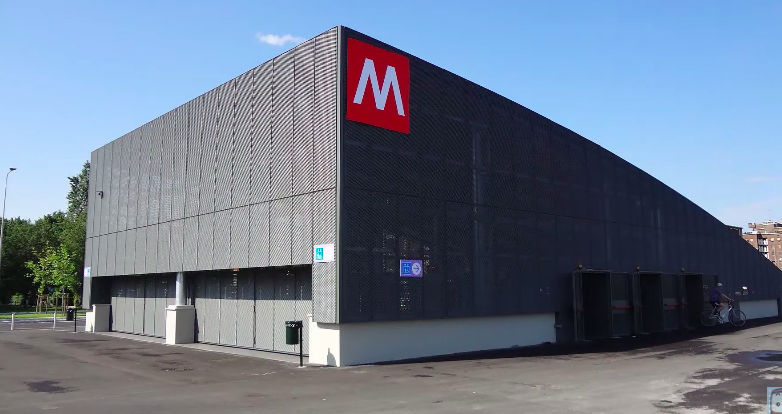
Tips
Find a metro map. A recommended city map is the “Popout” city map. You could download a map from the metro’s official website .The map shows each of the stations’ stops.
Review beforehand the location of the stations using a map. Most of the stations are not marked with their names, so you could enter the wrong station. You could also find the names of the stations using a guidebook.
Choose a station close to your hotel, and use it as your main station. Memorize the routes from this main station to the other stations. Also check how to make connections from other means of transportation to your main station.
If you will use the metro frequently within one or two days, buy a One Day or Two Day pass to get unlimited trips within that time. If you will travel less than 10 times, buy the Carnet, which gives you 10 rides. Each ride lasts up to 75 minutes. Students get discounts.
Tickets are sold at vending machines. You can also buy them in small shops by asking the shopkeeper for “un biglietto.” The turnstiles to enter the metro are marked with a green arrow. You cannot enter the turnstiles marked with a red X because they are either damaged or indicate that you are entering the wrong way.
Each platform has trains going into two directions. Each direction has the name of the next stop. Make sure to check your map to decide in which direction to go.
Fun facts
- 1) All trains have air conditioning.
- 2) Only M5 trains have doors that separate platforms from the tracks.
- 3) Its trains, made by AnsaldoBreda, are similar to the metros in Brescia and Copenhagen.
- 4) The metro is ridden by almost 900,000 people per day.
- 5) The M1 line trains get their electricity from a third rail. The M2 and M3 lines get their electricity from an overhead cable.
- 6) All trains from the M5 line are fully automatic, and belong to the AnsaldoBreda Driverless Metro train class. The future M4 line will also have automatic trains.
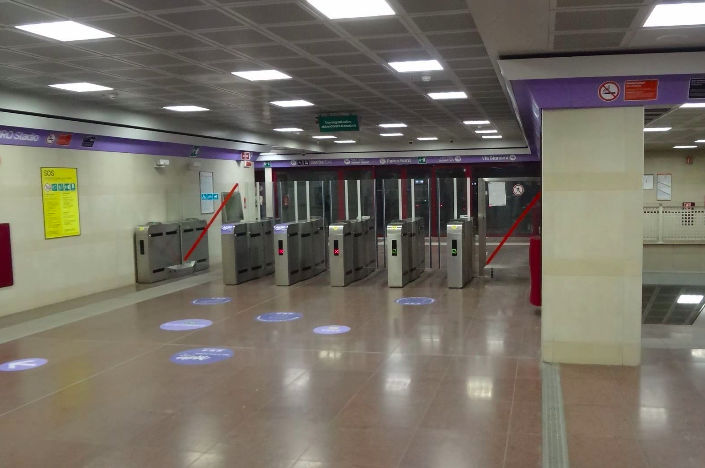
Nearby attractions
If you are an international tourist, the closest metro station from Malpensa Airport is Cadorna station. To go to touristic attractions from Cadorna station, follow these instructions (the ticket price will be shown in euros):
- 1) Pinacoteca di Brera: The entire trip will last 16 minutes, and costs €1.50. From Cadorna station, take an M2 train towards Assago Forum-Cologno Nord, or towards Abbiategrasso-Gessate, or towards Abbiategrasso-Cascina Gobba. Get off at Lanza. Finally, walk 420 meters to Via Brera 28.
- 2) Teatro Alla Scala: The trip lasts 11 minutes, and costs €1.50. From Cadorna station, take a M1 train towards Bisceglie-Sesto FS, or towards Rho Fiera-Sesto FS. Get off at Cordusio. Walk 310 meters to Piazza della Scala.
- 3) Il Duomo: The trip lasts 9 minutes, and costs €1.50. From Cadorna, take a M1 train towards Rho Fiera-Sesto FS, or towards Bisceglie-Sesto FS. After three stops, get off at Duomo. Walk 150 meters to Piazza del Duomo.
- 4) Piazza dei Mercanti: The trip lasts 7 minutes, and costs €1.50. From Cadorna, take a M1 train towards Rho Fiera-Sesto FS, or towards Bisceglie-Sesto FS. After two stops, get off at Cordusio. Finally, walk 50 meters to Via Mercanti.
- 5) Poldi-Pezzoli Museum: The trip lasts 15 minutes, and costs €1.50. From Cadorna station, take a M1 train towards Rho Fiera-Sesto FS, or towards Bisceglie-Sesto FS. After three stops, get off at Duomo. Walk 500 meters to Via Alessandro Manzoni, 12.
Metro map of Milan
Map via giromilano.atm.itSee map full resolution. It may take a little bit to load.
Download map.
Milan Metropolitana map
- Also Known As: Metropolitana
- Passengers/Day 899000
- Fares: 1.00
- 24h operation: No
- Air Conditioning: Yes
- Walk between platforms: Yes
- Driverless trains: No
- Screen Doors Platforms: No
- 1
- Milan Metro Official Website
Help us
If you consider that the information we provide is wrong, not accurated, outdated, translation contains errors, and you would like to help us to improve the file...you can contact us here.
Feel free to contact us if you dont find the system you're looking for and we'll add it as soon as we can!
Thank you very much!







